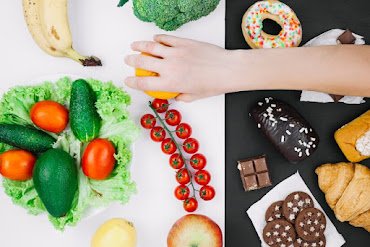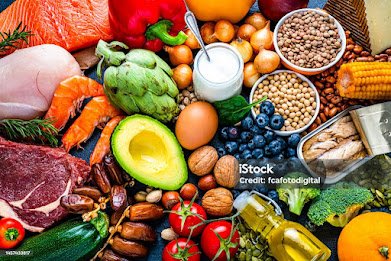A Complete Guide to Creating a Well-Balanced Meal for People with Type 2 Diabetes
- Set aside a quarter of your plate for items high in protein, a quarter more for carbohydrates with a low to moderate GI, and the other half of your plate for a variety of salads and vegetables. This helps with portion management and guarantees a balance of nutrients. Reducing the size of the plate can also help significantly reduce the portion size.
2. The Focus Is on Vegetables
Make an effort to include two or three portions of non-starchy vegetables in your meal. Half a cup of cooked vegetables or an entire cup of salad is represented by a single serving. Grated vegetables can add flavor to soups, sauces, and oven-baked dishes; alternatively, they might take center stage instead of playing supporting roles.
Two cups* of mixed salad mixed with bell peppers, tomatoes, lettuce, spinach, etc.
*You are welcome to serve more than these suggested serving sizes.
For every individual:
- Two little (45g) chicken eggs
- ½ cup of cooked legumes, such as chickpeas or lentils, or a blend of three beans
- 120 grams of tofu
- 100g of skinless cooked chicken (125g raw)
- 100g of lean meats (125g raw) such as lamb, hog, or beef
- 120g of cooked fish (170g raw), such as canned tuna, salmon, or mackerel
- 40g of low-fat cheese, or roughly two pieces
4. Add Controlled Portions of High-Quality Carbohydrates
Eat less starchy vegetables in your meal to lower its glycaemic load.
To keep the overall GI of your meal low, choose foods high in fiber yet low to moderate in GI. Choose quinoa, barley, pasta, noodles, grainy breads, and basmati rice. Interestingly, legumes have low GI carbohydrates and are also a source of protein.
For every individual:
- A quarter cup of cooked brown or basmati rice
- One cup of cooked noodles or pasta, ideally wholemeal
- Two slices of wholegrain bread or one tiny wholegrain bread roll
- One cooked medium-sized kumara or tiny potato
- One medium-sized corn cob
- ½ cup of cooked couscous or quinoa
For every individual:
- two tsp pesto or chopped or crushed nuts
- One teaspoon of extra virgin olive oil or another plant-based oil
- two tspn of salad dressing or avocado
- A single tablespoon of hummu



